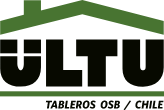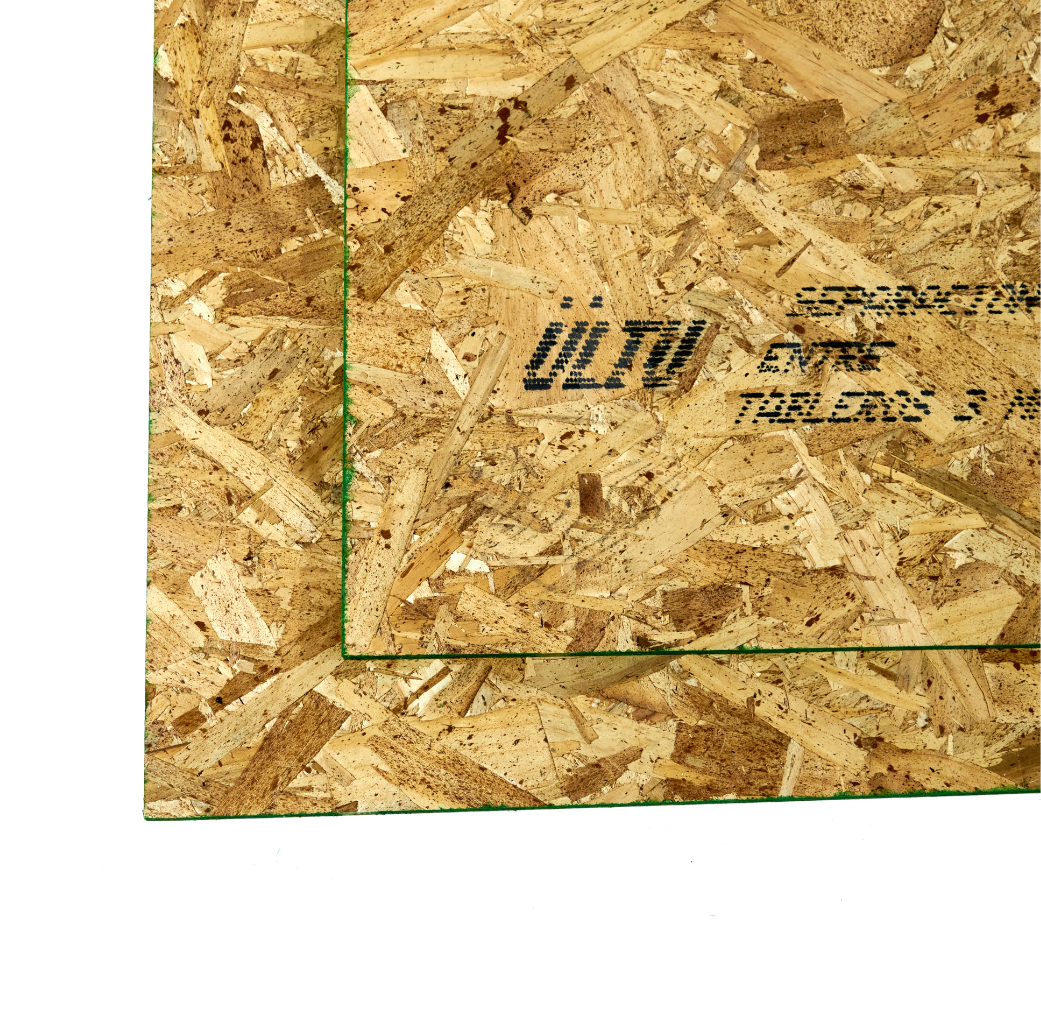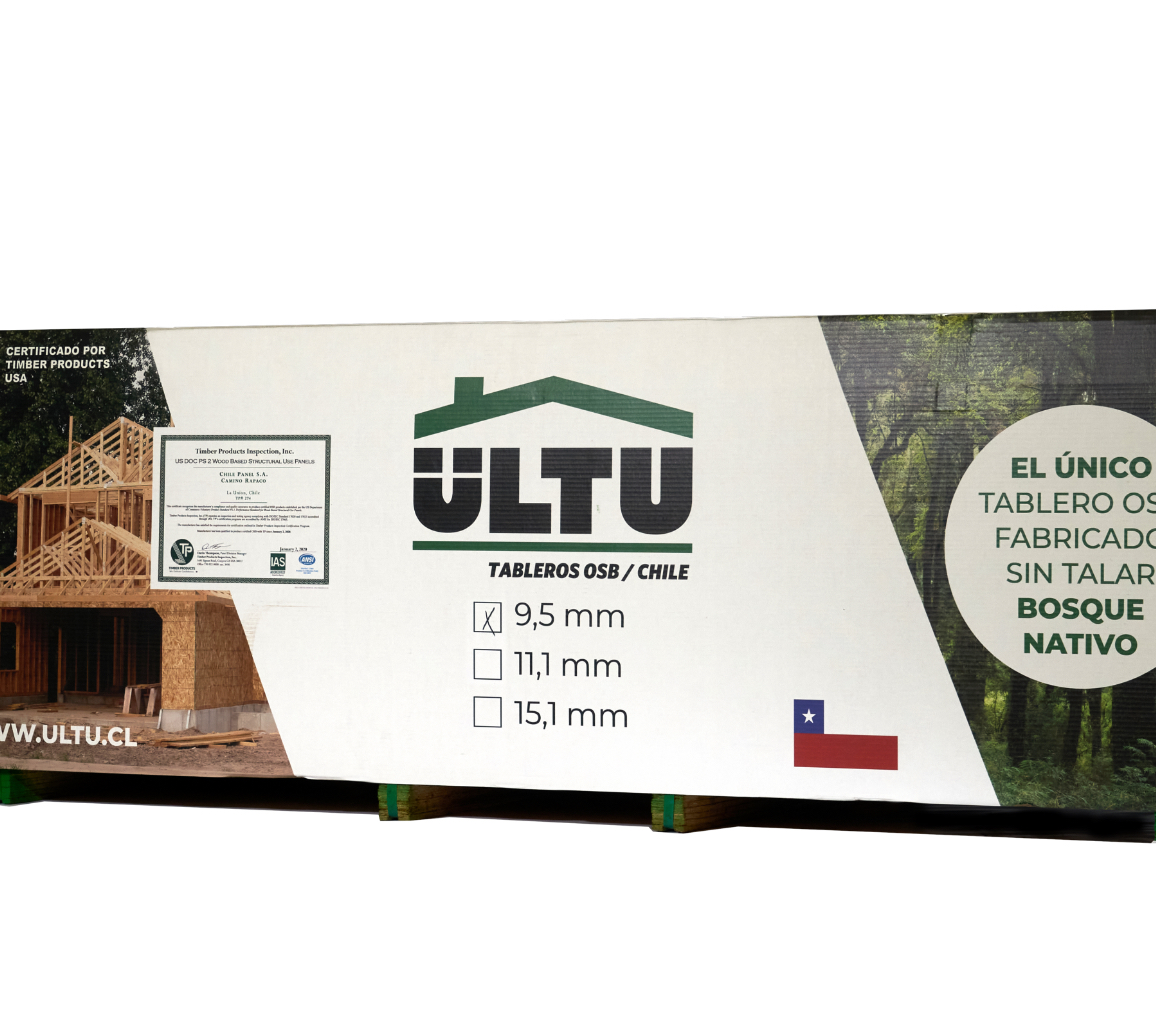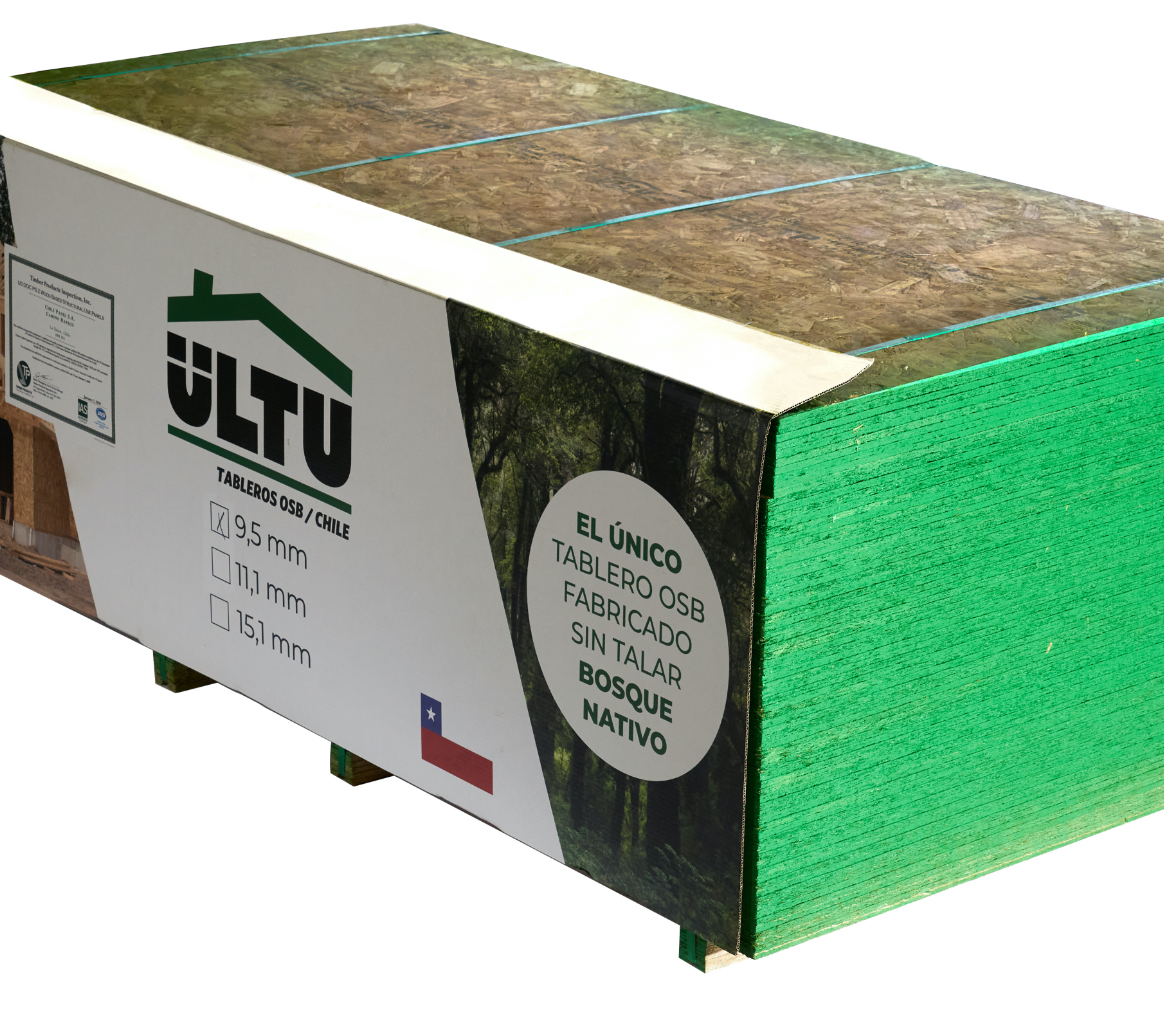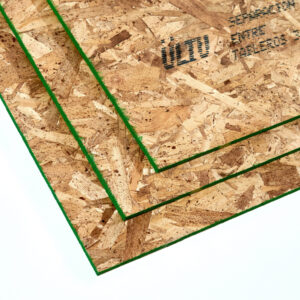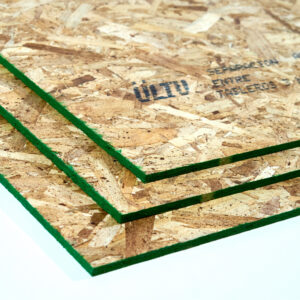OSB 9,5 mm. Structural
Board of high mechanical strength (is very little sensitive to deformation) retains temperature insulation properties, both heat and cold.
Structural use for ceilings and walls with certified span (separation between stands).
Structural certificate board according to the Chilean standard required for the efficiency of construction.
Composition
The wood used in the production of OSB, is mostly of pine. The chips are cut tangentially from the logs after debarking.
Appearance
Because of its appearance, the OSB board is perfectly identifiable due to the size of the flakes and their orientation on the surface of the board. The main advantages of OSB board reside in the field of their mechanical properties, which are directly related to the geometry of the chips, as well as its orientation on the board. Although OSB is made up of relatively long flakes, its surface is solid and relatively smooth, and can be enhanced when sanded, without losing the aesthetic appearance that is a characteristic only of the OSB.
The OSB board varies in color depending on the wood species used in its manufacturing process, the gluing system or the pressing conditions, ranging from a straw-yellow in color to a soft brown.
As a result, one gets boards free of knots and cracks, stable and uniform, that are easy to cut, nail or screw, with common use tools.
On traditional construction methods:
- Reduces construction time
- Low costs of materials and labor.
- Best quality / price ratio
- Fabricados con renovales de Pino.
Uses
In Roofs
The application of the OSB panels in roofs allow to considerably reduce the installation times of the decks, creating uniform and stable surfaces, able to receive coverings such as asphalt shingles or other roofing solutions.
Having densities under 650 Kg/m3, the boards are easy to handle.
In Walls
The use of the OSB panels in the structuring of walls allows you to remove studs and lateral bracings, generating significant savings of up to 50% on materials and labor. This excellent low-cost option has allowed to replace concrete and masonry walls.
Furniture
There are many designers that take advantage of its appearance, to create modern and versatile creations.
Shelving, doors, tables are just some of the options.
Installation
Layout and Spacing of the Fasteners
Edge Spacing
Leave at least 10 mm between the edge of the board and line of fixation.
On the Perimeter of the Boards
Every 15 cm above the support edges as a minimum.
The Interior of the Boards
Every 30 cm on the below supports as a minimum.
Dilation between Boards
It must be considered a dilation minimum of 1/8” (3 mm) around the entire perimeter of the board.
Ventilated Environments
The structures of the decks must have adequate ventilation to remove excess moisture, which is in the attic, not having it can lead to ripples on both boards, as in asphalt shingles. It is recommended that cross-ventilation between eaves and ridges, at the rate of 1 m2 every 150m2 of flooring or ceiling. Also 1 m2 every 300 m2 if included a vapor barrier at the level ceiling
Installation in Walls
The OSB panels are generally installed in a vertical way, but it is also possible to install them horizontally. If installed horizontally, it is necessary that the longitudinal side is always supported. The boards should be separated a minimum of 15 cm of the ground. Between the footing and the board of ÜLTU OSB it should be required to place a moisture barrier (a tin or aluminum seal).
Specifications and certification
Table of Installation of ceilings
(Product, separations, admissible load)
| Product | Separation | Application | Thickness (mm) | Maximum separation máxíma of the support shaft (mm) | Allowable load Kg/m2 |
| RS 9.5 mm | 24/0 | Ceiling | 9.5 mm | 610 | 195 |
Physico-mechanical properties
Product specifications
| Product | Separation | Density Kg/m3 | Thickness (mm) | Length mm | Width mm | Board, pallet | M3 pallet |
| RS 9.5 mm | 24/0 | 600 | 9.5 mm | 2440 | 1220 | 84 | 2,38 |
Physico-mechanical properties
| Product | Separation | EI (N/mm2) | MM (N/mm2) | Swelling % | ||
| Parallel | Perpendicular | Parallel | Perpendicular | |||
| RS 9.5 mm | 24/0 | 292 | 85 | 330 | 130 | 25 |
Voluntary PS 2 product standard
The PS 2 Voluntary Standard for product covers the performance requirements, the performance of the bond, the construction of the board, the dimensional tolerances required, the moisture content and marking requirements of quality of the wood-based structural panels. The PS 2 covers panels for structural use including plywood, structural OSB, other boards formed with mat composition, and wood ply compounds. It provides a program for the certification of quality by which the different qualified agencies, inspect and test the identified products that comply with the PS 2 standard.
ASTM Standards
- E 72-15 standard test Methods for conducting strength tests of panels for building construction.
- E 661-03 Standard test method for the performance of wood and wood-based floor and roof loads.
- D 1037-12 standard test Methods for evaluating properties of wood-fiber-based particles and materials of the panel
- D 1761-12 standard test Methods for mechanical fasteners in Wood.
- D 3043-17 standard test methods for bending in structural panels.
- D 4442-16 Métodos de prueba estándar para la medición directa de humedad contenido de la madera y compuestos de madera
- D 2915-17 standard practice for the evaluation of eligible properties for grades of structural timber.
